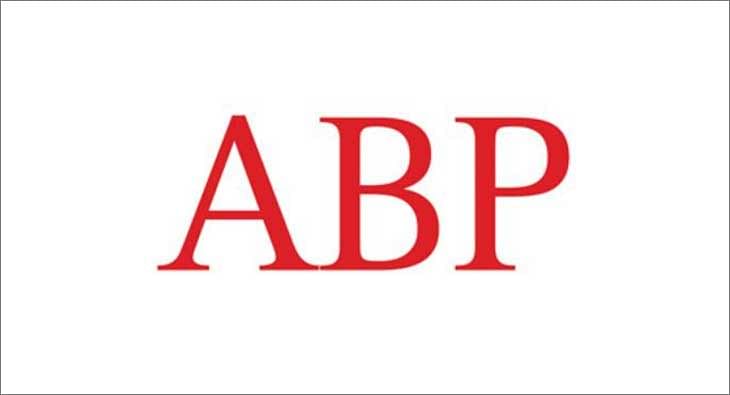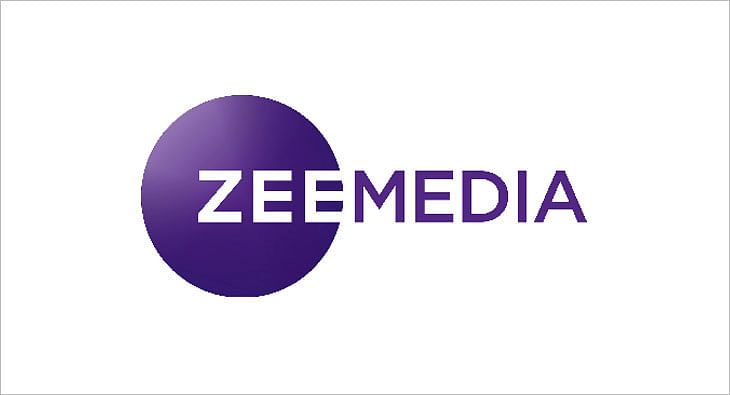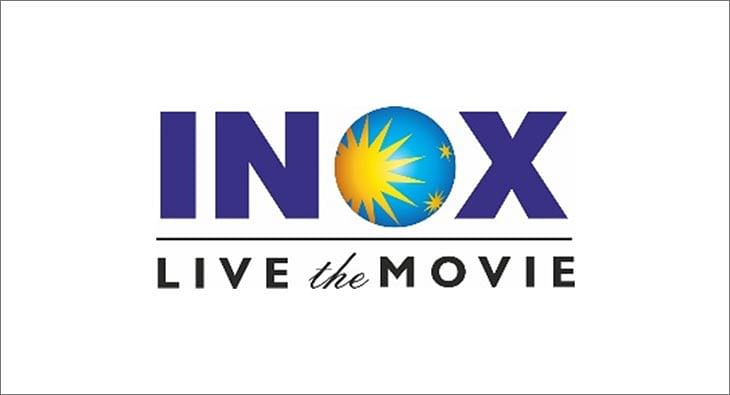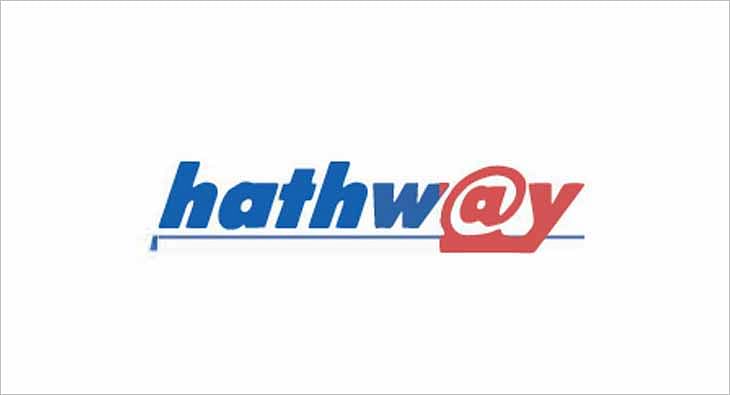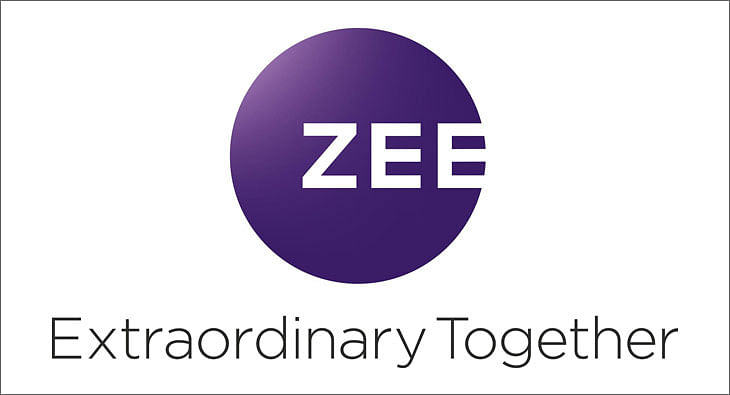Guest Column Retrofit: This Goliath has tripped on its own
India’s biggest media entity is all set to declare a loss for the first time in its long and illustrious history. It was unthinkable till even a year ago that the group which had established the media multiplier theorem could be on skid row. So, why have things come to such a sorry pass? Veteran journalist <b>Sandeep Bamzai</b> analyses.

Is Goliath in the throes of a financial crisis? David was not required to slay this Goliath. Goliath tripped on its own. India’s biggest media entity is all set to declare a loss for the first time in its long and illustrious history. Bah, what rubbish? Yes, my sentiment exactly, but cold hard nosed reality is what it is. So, why have things come to such a sorry pass? It was unthinkable till even a year ago that the group which had established the media multiplier theorem could be on skid row.
In fact, Goliath faces a major crisis if equity is not raised soon. That is perhaps the most damaging indictment of how things have gone from good to worse in next to no time at the media conglomerate. A conglomerate, which was feared and despised for its battle plans and blueprints. A conglomerate, which had carved a large area of influence across the country with leadership positions in major swathes.
Goliath now needs to raise funds quickly is the clarion call. Whatever happened to all the reserves and surplus that were accumulated over time? The panacea is to sell shares owned by Goliath in a large private sector bank (received in lieu of a transaction done some years ago), as also hawk liquid investments from the Private Treaties (barter deal, where company gets advertising inventory in exchange for equity, essentially a cash less transaction) portfolio (even if at a loss). Moreover, the dark and dank outlook includes renegotiation of private treaty deals to lessen market impact and even reversing deals in cases where investment upside looks unlikely.
These private treaties were practically anathema to the editorial top deck, leading to conflict situations and even resulted in turnover. Private Treaties were foisted on the editorial and affected the morale of the personnel. The irony is that the cash impact was only to the extent cash taxes are paid on revenue recognised. A Rs 2,700-crore portfolio has estimated market value of merely Rs 1,300-1,400 crore. Furthermore, there is a major accounting loss when marked to market. The entire financials, if restated without Private Treaties, will show massive erosion. Yet, they were persisted with and they seem to have brought the company to ruin. Am I painting a very grim scenario? Have many of the lurking suspicions about the entity now come true? The answer to both posers, unfortunately, is in the affirmative.
Now, let us break down the lowdown on the showdown. In July 2008, the company posted operating revenues of Rs 3,316 crore, this year it is expected to register Rs 2,500 crore. Last year, newsprint cost alone was Rs 1,185 crore, this year with prices cooling down, it is down to Rs 893 crore. Similarly, employee cost is down year-on-year from Rs 480 crore to Rs 430 crore. Maybe due to layoffs and major pay cuts across the board, including lopping of variable pay. Other expenses were Rs 1,000 crore last year, down marginally to Rs 900 crore this year. Remember, all these figures for this year are estimates. Incidentally, the company follows a June 30 financial year. EBITDA (Earnings before Interest, Depreciation and Amortisation) from operations last year was Rs 651 crore, down to Rs 277 crore this year in provisional estimates.
Other income last year was Rs 259 crore, while this year’s estimate is Rs 100 crore (after taking out profit on sale of a retail venture to a consumer durables major) and other investments. Now comes the intriguing part. Last year, depreciation was negative – Rs 195 crore, which is down to – Rs 275 crore. Yes, the company is in a major capex mode and between the private treaties and expansion mode, it is well and truly a double whammy. The next post will thus be self explanatory – interest cost has mounted from Rs (32 crore) to minus Rs 250 crore. And therein lies the rub for profit before tax, which was Rs 683 crore last year will be negative minus Rs 148 crore, the first ever loss in Goliath’s history. Now let us also understand that these are estimates, but scary nevertheless. For they are estimates about the first among equals – Goliath. Internal estimates are never wrong, for hard number crunching is done and not back of the envelope calculations. This is the genuine McCoy. And that is what makes it all the more astounding.
It is obvious that many of the punts have gone wrong, namely Private Treaties and all new economy businesses. Investments in radio, Internet and telly, as also in financial services companies. All these chickens have come home to roost. The consolidated net investments in new media are equal to the entire net worth of Goliath, representing the re-investment of entire profits of the print business over the decades. Till date, Goliath has back of the envelope invested Rs 1,700 crore on new media investments. If one hears of wage cuts and other such dramatic measures, it could well be because the finances and resources for what was once a remarkably cash rich company are stretched too thin. One also hears that some of these weighty capital expenditure plans will only break even by 2016-17. Dang! What is perhaps most significant in this saga is that the virtual erosion in finances and resources has partly come from the flawed Private Treaties model. The advertising for equity barter worked like clockwork when the markets were unidirectional and more or less secular for about four and a half years. When the bottom fell out of the market due to bulge bracket FII and hedge fund selling, the wheels came off the private treaty bus.
The steep falls in financial parameters over a one-year period are particularly worrying, even irksome. In July 2007, total debt was Rs 135 crore, enlarged to Rs 1,351 crore in July 2008. Total liabilities have ballooned up to Rs 5,613 crore in July 2008 from Rs 3,575 in the previous year. On the investments front, liquid investments are down from Rs 193 crore in July 2007 to Rs 130 crore in July 2008. Then comes the veritable blinder in this mix – advertisement for equity investments in July 2007 were at Rs 1,313 crore, which shot up to Rs 2,729 crore in July 2008. Loans and advances to subsidiaries were also up in equal measure from Rs 468 crore in July 2007 to Rs 1,088 in July 2008.
Now, finally let us look at a three-year horizon – sources and uses of cash between 2005 and 2008.
Cash from operations – Rs 4,000 croreSale of Liquid Investments – Rs 1,000 crore
Increase in debt – Rs 1,350 crore
Total cash available – Rs 6,350 crore
Capital Expenditure – Rs 2,000 crore
Private Treaties – Rs 2,700 crore
Investments in subsidiaries – Rs 1,700 crore
Total cash used – Rs 6,400 crore
I don’t need to be a human clone of Warren Buffet to explain what has gone wrong here. While income from operations was a robust Rs 4,000 crore, Rs 1,350 crore of debt was taken on the books by Goliath. It was the first time that Goliath had ever taken net debt. Moreover, Rs 1,000 crore of liquid investments were hawked off, wiping out the entire liquid portfolio. Ironically, in this double barrel of Private Treaties and New Media investments, two siblings as different as bread from syllabub are involved. The sum and substance of this tale of woe is that since the media entity is cash strapped, it is trying to dilute equity in various subsidiaries, a hitherto unknown concept in the Empire. Times are tough, valuations are aplenty and bargain basement cheap. Will somebody bite the bait?
(Sandeep Bamzai is a well-known journalist who started his career with The Statesman in Kolkata in 1984. He has held senior editorial positions in some of the biggest media houses in three different cities - Kolkata, Mumbai and New Delhi - with The Indian Express, Illustrated Weekly, Sunday Observer, Dalal Street Journal, Plus Channel where he ran India's first morning business show on Doordarshan, The Times of India Group, Business India, Hindustan Times and Reliance Big Entertainment. Starting his career as a cricket writer, he graduated to becoming a man for all seasons under Pritish Nandy, who he considers as the premier influence on his career. Since he studied economics at Calcutta University, Bamzai decided in 1993 to branch out into business and financial journalism. Familiar with all three media, he is the author of three different books on cricket and Kashmir. The views expressed here are of the writer’s and not necessarily those of the editors and publisher of exchange4media.com.)
Read more news about (internet advertising India, internet advertising, advertising India, digital advertising India, media advertising India)
For more updates, be socially connected with us onInstagram, LinkedIn, Twitter, Facebook Youtube & Whatsapp
You May Also Like
HT Media posts Consolidated Total Revenue of Rs 580 crore in Q2
Chairperson and Editorial Director Shobhana Bhartia says due to lower commodity prices and control on costs there has been an improvement in operating profit
HT Media has posted a Consolidated Total Revenue for Q2, 2020 at Rs 580 crore.
As per a statement released by the company, EBITDA for Q2’20 increased by 139%, and margins at 14% vis-à-vis 6% in previous year. This has been driven by softening of newsprint prices and continued focus on cost.
The Net Cash position at a consolidated level continues to be strong.
The Print ad revenue has declined due to sluggish volumes, even as yields have improved. National advertising continues to be soft, although local advertising witnessed growth.
Savings in raw material costs have driven improvement in EBITDA margins.
Chairperson and Editorial Director Shobhana Bhartia said, “Slowing economic growth has hit advertising spends in key categories, putting pressure on revenues across the media industry. As a result, our Print and Radio (on like to like basis) businesses saw revenues dip as compared to a year-ago. However, thanks to lower commodity prices and a tight control on costs, we saw an improvement in our operating profit. On the digital front, Shine, our online recruitment portal has shown good progress and continues to grow. Our outlook for the coming quarter remains cautious, given overall economic sentiment and macroeconomic trends. Cost-control and falling commodity prices should help protect our margins.”
Read more news about (internet advertising India, internet advertising, advertising India, digital advertising India, media advertising India)
For more updates, be socially connected with us onInstagram, LinkedIn, Twitter, Facebook Youtube & Whatsapp
ABP Group posts Rs 15.70 crore as net profit in Q1 FY20
The group’s total operating income stands at Rs 365.55 crore
ABP Group has posted a net profit of Rs 15.70 crore in the first quarter of FY20, as per media reports.
The group’s total operating income stands at Rs 365.55 crore.
It’s net profit for the fiscal ended March 31, 2019, was down 68% to Rs 31.90 crore compared to the previous fiscal.
The Profit Before Interest Lease Depreciation and Tax (PBILDT) has also dropped 53.52% to Rs 107.12 crore.
The group has six news channels - ABP News (Hindi), ABP Ananda (Bengali) ABP Majha (Marathi) and ABP Asmita (Gujarati), ABP Sanjha (Punjabi) and ABP Ganga (Hindi).
Read more news about (internet advertising India, internet advertising, advertising India, digital advertising India, media advertising India)
For more updates, be socially connected with us onInstagram, LinkedIn, Twitter, Facebook Youtube & Whatsapp
Zee Media posts consolidated revenue of Rs 137.03 crore for Q2 FY20
ZMCL has recorded 4.4% growth in operating revenue for first half of FY20
Zee Media Corporation Ltd (ZMCL) has posted a 4.4 per cent growth in operating revenue to Rs 337.6 crore in the first half of FY20, as per media reports.
It has reported a consolidated revenue of Rs 137.03 crore for Q2 FY20.
In a statement, ZMCL has said: “During the quarter, the network expanded its footprint s into Southern India through the launch of Zee Hindustan in Tamil and Telugu languages. This is intended to make the network's content accessible to wider audience.”
The operating expenditure in Q2FY20 has dropped by 21.7 per cent.
The statement further said: “EBITDA for HlFY20 improved by 34.1 per cent to Rs 1,029 million from Rs 767.5 million EBITDA for H1FY19, while the same declined by 9.4 per cent to Rs 370.2 million from Rs 408.7 million for the corresponding period last financial year. EBITDA Margin grew from 23.7 per cent in H1FY19 to 30.5 per cent in HlFY20, while growing from 24.2 per cent in Q2FY19 to 27 per cent in Q2FY20.”
Read more news about (internet advertising India, internet advertising, advertising India, digital advertising India, media advertising India)
For more updates, be socially connected with us onInstagram, LinkedIn, Twitter, Facebook Youtube & Whatsapp
No slowdown here: In-cinema ad rates up by at least 50% for 3 big Diwali releases
Housefull 4, Made In China and Saand Ki Aankh ready to hit the silver screen this week, with the hopes of giving brands the eyeballs they look for in theatres
It’s that time of the year again when theatres gear up to pocket maximum gains. Diwali is here and there are three films ready to hit the silver screen this week--Housefull 4, Made In China and Saand Ki Aankh. The festive period brings much joy to exhibitors, distributors and theatre owners because it ensures footfalls, giving brands the eyeballs they look for. In fact, industry experts don’t feel that economic slowdown this year has impacted in-cinema advertising. While they are concerned about three movies clashing during Diwali, they predict 50-100 per cent rise in ad rates during this period.
Advertising moolah
Mohan Umrotkar, CEO, Carnival Cinemas, is expecting 60-70 per cent surge in advertisement topline compared to last year. “Going by the buzz and advance booking for these three releases, market is bullish. Advertisers have blocked most of the advt-slots during the festival period. Housefull 4, Made In China and Saand Ki Aankh all combined together should generate around Rs 350 crore topline at the box office during the festival week. We are expecting 60-70 per cent surge in the advertisement topline from last year. Also, this year we have added around 14 per cent new advertisers, and 4 per cent of them are first-time cinema advertisers,” he says.
But according to Siddharth Bhardwaj, Chief Marketing Officer - Head of Enterprise Sales, UFO Moviez, things have changed a lot in the last couple of years. “Since some films have not really lived up to their expectation, advertisers are spreading the spends all through the year. They are picking up far more number of titles in the year rather than focusing only on Diwali or Eid.”
“It is good for the industry because you can monetise the inventories beyond just big weeks. A lot of content- driven films have come up which has given us the opportunity to monetise more markets. It has put lesser pressure on Diwali. Most of the cinemas are sold out for Diwali. It becomes difficult to accommodate everything,” Bharadwaj opines. He also reveals that for this week, the inventories are already full.
Diwali ad rates
Experts reveal that ad rates differ from property to property and depends on location as well. But Diwali surely sees a massive hike in rates. This year, theatre owners are expecting 100 per cent rise in ad rates. While Umrotkar revealed that for Diwali, they are charging 100 per cent higher than the regular card rates, Girish Johar, trade analyst and film producer, shared that even the rates for putting up kiosks of brands go up during festivals like Diwali.
“It’s based on property. On a ballpark, ad rates double up. So if you are putting up a kiosk, they charge say Rs 50,000-25,000 for a month. During Diwali, they charge almost double because of the kind of footfalls theatres witness,” Johar revealed.
Economic slowdown? Not for Cinema!
This year, brands have been pulling back their spends on other mediums due to economic slowdown, but cinema seems unaffected. Calling entertainment business recession-proof, Johar explains, “If you see the other side, box office is up by 15-20 per cent. Yes, it is a bit subdued because the brands are in a wait-and- watch scenario. They are increasing their focus around consumption rather than awareness.”
Bharadwaj too seconded it by saying, “These are challenging times but our medium is very efficient. If you see economy has slowed down, but the cinema has grown instead.”
Clash cover
Three movies are clashing this Diwali which means shared screens and box office gains.
“It’s never good for us when two or more big-ticket films release together. If they would have come on different dates, there are chances that more advertisers will take advt. inventory in those weeks separately instead of that one particular week,” shares Umrotkar.
Read more news about (internet advertising India, internet advertising, advertising India, digital advertising India, media advertising India)
For more updates, be socially connected with us onInstagram, LinkedIn, Twitter, Facebook Youtube & Whatsapp
INOX Leisure Ltd sees 42% growth in total revenue
Profit After Tax up 327% to Rs 51 crore
INOX Leisure Ltd (INOX) has reported financials for the second quarter ending September 2019.
Its total revenue has risen to Rs 524 crore with a 42% growth from Rs 369 crore in the corresponding quarter in FY19. Its EBITDA has more than doubled to Rs 107 crore with a 121% growth, while the PAT stood at an impressive Rs 51 crore, up 327% from previous year’s second quarter.
Siddharth Jain, Director, INOX Group, said: “At INOX, setting new benchmarks is now a routine, thanks to our consistently sharp focus on luxury, service and technology and our uncompromised desire to offer our patrons, nothing but the latest and the best! We are delighted with our remarkable consistency on all parameters, and we are sure about maintaining the momentum and focus on innovativeness. Content once again proved that why we term it as the ‘hero’. Thanks to the creators of such spellbinding movies, which keep inviting our guests to our properties, and allowing us to pamper them with our signature hospitality. With the launch of Megaplex, we are delighted to further our endeavor of developing experience-driven cinema destinations of global standards, and we will continue to do so. On behalf of Team INOX, I assure all our stakeholders that we will continue to break barriers and exceed all expectations.”
Read more news about (internet advertising India, internet advertising, advertising India, digital advertising India, media advertising India)
For more updates, be socially connected with us onInstagram, LinkedIn, Twitter, Facebook Youtube & Whatsapp
Hathway Cable & Datacom reports 100% subscription collection efficiency in Q2
The broadband subscriber base has increased from the previous quarter’s 840,000 to 860,000
Hathway Cable and Datacom has reported subscription collection efficiency at 100%, and the broadband subscriber base has increased from previous quarter’s 840,000 to 860,000 in quarter ending September, as per media reports.
It has narrowed its consolidated net loss by 74% and the operating EBITDA has been reported 15% up to Rs 107.5 crore compared to Rs 93.1 crore a quarter ago.
The total income has dropped 2%, while the expenditure is down 6%.
In the financial results, the company has said the FTTH markets are leading growth in customer acquisition.
Read more news about (internet advertising India, internet advertising, advertising India, digital advertising India, media advertising India)
For more updates, be socially connected with us onInstagram, LinkedIn, Twitter, Facebook Youtube & Whatsapp
ZEEL posts 7.4% YoY growth in total revenue for Q2 FY20
ZEEL's domestic advertising revenue has grown 1.4% YoY in Q2FY20
Zee Entertainment Enterprises Limited (ZEEL) has reported a consolidated revenue of Rs 2,122 crore for the second quarter of FY20, recording a growth of 7.4% on YoY basis.
The Earnings Before Interest, Tax, Depreciation and Amortization (EBITDA) was recorded as Rs 692.9 crore with an EBITDA margin of 32.7%. PAT for the quarter was Rs 413.2 crore. The Profit After Tax (PAT) for the quarter was Rs 413.2 million, with a growth of 6.9% YoY.
During the second quarter, ZEEL’s consolidated advertising revenue grew by 1.2% YoY to Rs 1,224.7 crore. The domestic advertising revenues grew by 1.4% YoY to Rs 1169 crore.
ZEEL has posted 26.8% YoY growth in Q2FY20 domestic subscription revenue. ZEEL’s consolidated subscription revenue grew by 19.0% to Rs 723.5 crore during the quarter.
ZEEL’s total expenditure in Q2FY20 stood at Rs 1429.1 crore, higher by 9.9% YoY compared to Q2FY19.
While ZEE5 recorded a peak DAU (Daily Active User) base of 8.9 million in September 2019, ZEE5 users watched an average of 120 minutes of content on the platform in the same month.
During Q2 FY20, the television network had an all-India viewership share of 18.4%.
During the quarter, ZEEL’s international business revenue was Rs 208.2 crore. The advertising and subscription revenues for international business declined by 4.0% YoY and 21.5% YoY, respectively.
Zee Music Company has registered 7.1 billion views on YouTube in Q2.
Punit Goenka, Managing Director and CEO, ZEEL, said, “I am pleased with the performance we have exhibited during the quarter. Our entertainment portfolio continues to grow from strength to strength across all formats and maintained its leading position. Our television network has emerged stronger post the implementation of tariff order on the back of a strong customer connect and brand pull of its channels. ZEE5 continued to gain traction across audience segments and markets, driven by its compelling content library and expanding list of partnerships across the digital eco-system. This strong operating performance allowed us to deliver industry leading growth in both advertising and subscription despite the tough macro-economic environment. Domestic subscription growth of 27% has reaffirmed the value proposition our television network has built over the years. The impact of tariff order has now largely settled down and has brought increased transparency along with improved monetization. Our domestic advertising revenue growth, though significantly lower than historical trend, is higher than the industry growth. We have witnessed an improvement in ad spends through the quarter and we believe that the onset of festive season along with measures taken by the government will help revive the consumption growth.”
Read more news about (internet advertising India, internet advertising, advertising India, digital advertising India, media advertising India)
For more updates, be socially connected with us onInstagram, LinkedIn, Twitter, Facebook Youtube & Whatsapp




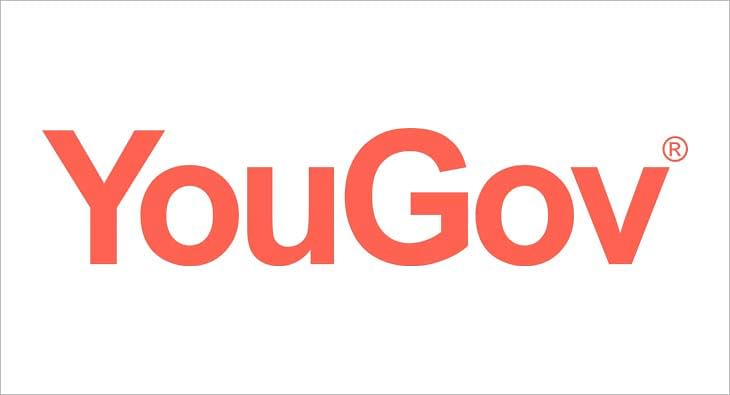
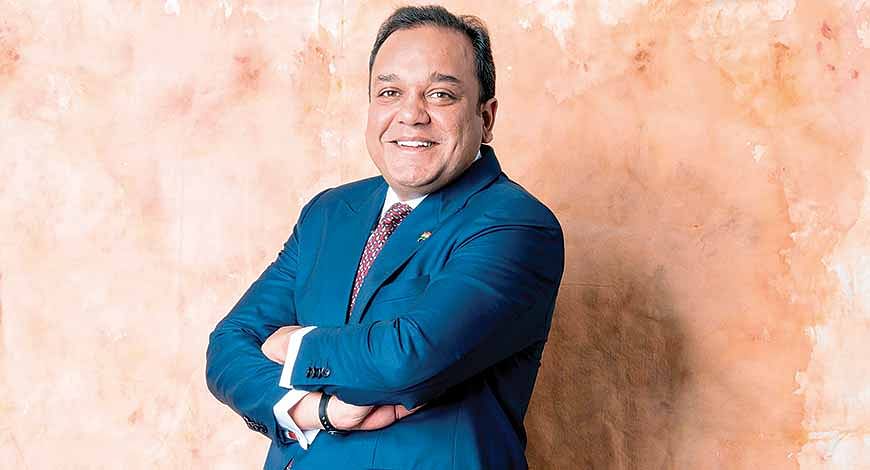
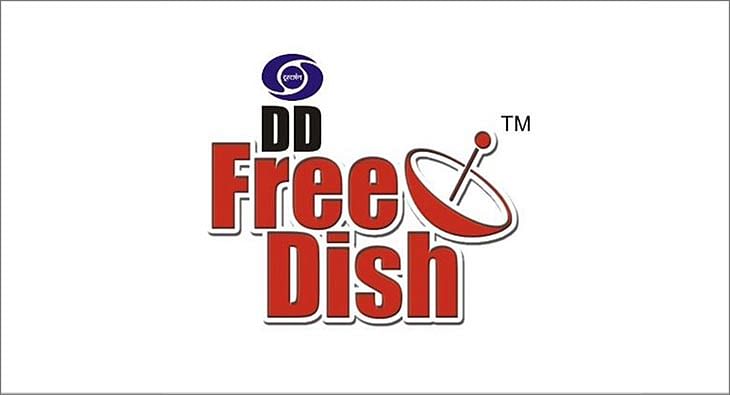







 Share
Share